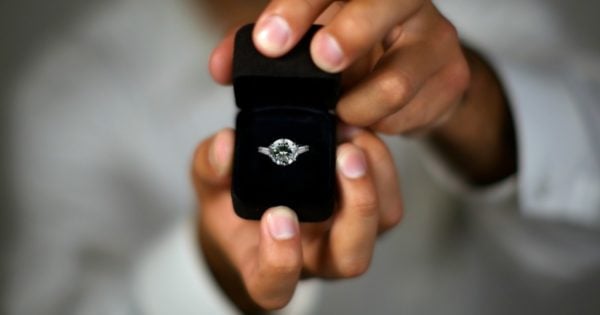Lab-made, synthetic diamonds are becoming increasingly similar in quality, cut, and clarity to natural ones. Technological advances has resulted in their growing use and acceptance in industry – but cracking the luxury consumer market is the final frontier. This is in large part to do with the the way consumers place value on products.
The idea of creating diamonds in a laboratory is not new. Scientists have been at it since the mid-19th century, armed with the knowledge that diamonds are the product of carbon that’s exposed to high heat and pressure. But applying this in a lab environment remained elusive until the 1950s. Since then, three different techniques have been developed to produce increasingly authentic-looking synthetic diamonds. This applies to their appearance, as well as their physical properties such as thermal conductivity, electron mobility and hardness, which can even be superior to natural diamonds.
Thus, synthetic diamonds are increasingly used in high-tech laser cutting and polishing tools. Electronic applications are also being developed for various industries, such as power stations. Analysts estimate that more than 95% of all industrial diamonds are synthetic.
Two types of threat
An immediate threat that synthetic diamonds pose to the traditional industry is from those that are falsely marketed as natural. With the labour costs of cutting and polishing natural diamonds on the rise, there is a growing concern that synthetic versions are being passed off as the real deal to make savings. Synthetic variants are around 15-25% cheaper.
But this is a relatively manageable threat. Preventive measures such as devices that allow quick detection of synthetics and a new Natural Diamond Quality Assurance programme have been put in place. And discussion is ongoing regarding laws that require retailers to explicitly mark synthetic diamonds.



Top Comments
'Synthetic Diamonds' are not diamonds at all, mostly overpriced zircon or white topaz. They are marketed in a way to confuse people into thinking that they are actually lab created diamonds (i.e. Carbon).
A genuine lab created diamond is identical in chemical structure and appearance to a mined diamond because it IS a diamond. However a 1 carat lab created diamond is actually dearer than the equivalent mined diamond due to cost of production. So the issue isn't marketing or perceived value at all.
Not only conflict free, but less people dying or working under dreadful conditions to mine diamonds. For that reason I would prefer the synthetic version every time.
Obviously nobody should want to support the conflict diamond industry, but no one considers what would happen if the diamond mining industry collapsed. There are so many people employed by it, even in cruel conditions - where would they go, what would they do, how would they feed their families if their source of income was gone? What would happen to the many communities that have grown up around the industry? It will take careful planning, and the introduction of a new industry, if we want to stop conflict diamond mining in a positive way.
But industries don't rise overnight. It's much like the car manufacturing industry going down here - there's not enough jobs to spare for all the workers who have been let go as a result of the industry collapsing. And the people working in conflict diamond mines don't exactly have savings to fall back on.
That's not what I was getting at at all. If the conflict diamond industry collapses, what happens to the conflict diamond workers? They will no longer have jobs, even cruel ones. They don't have the skills to work in the synthetic diamond labs, and those labs aren't all going to be located in Africa anyway. You can't close an industry, even a cruel one, and hope the workers praise your actions. More likely they'll turn around and say, "So what now? Where are you going to find us work? How will we feed our families?"
This is a ridiculous argument. Your basically saying that slavery is good because at least they have a job.
And yes, it is slavery. This has been proven over and over.
Yes the collapse of the industry is better than what is currently going on.
Industries die all the time and we need to let them. The world will move on.